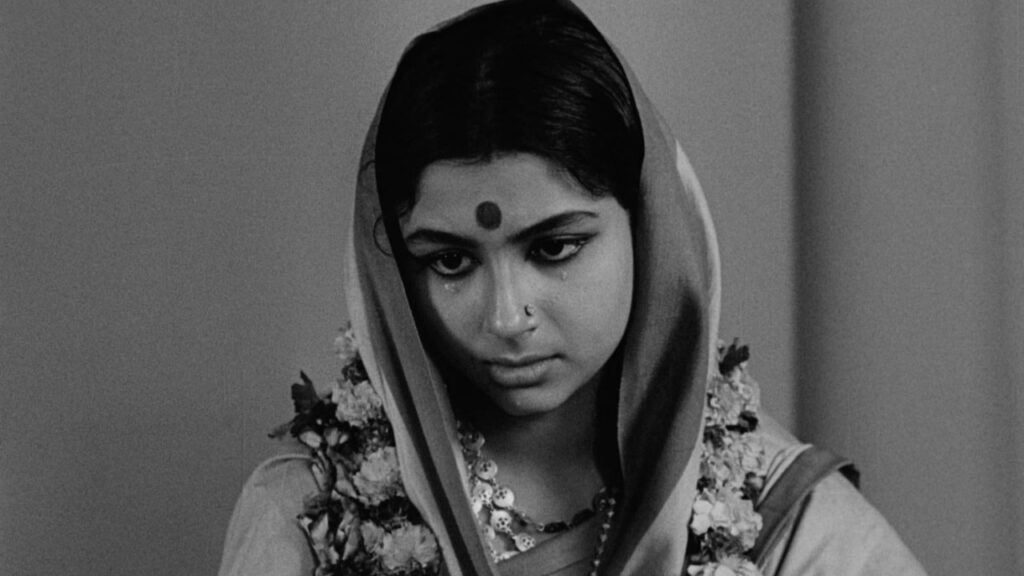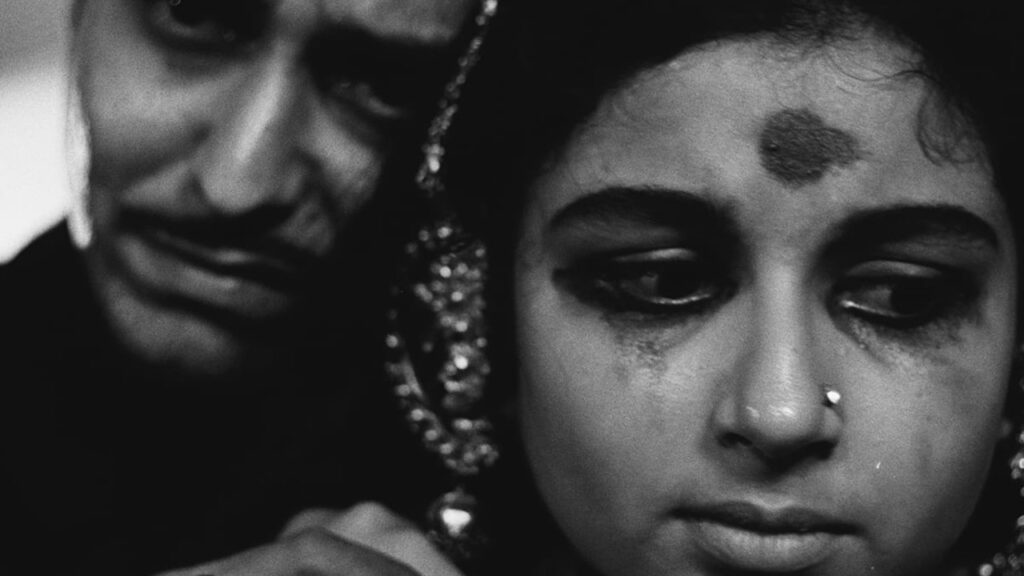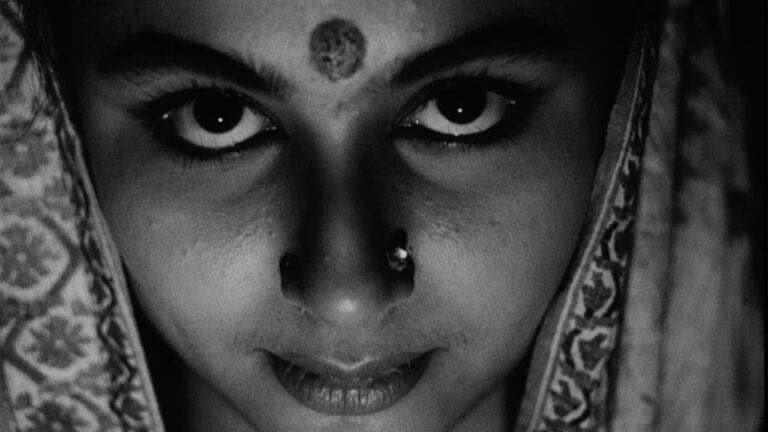Satyajit Ray’s Devi remains one of the most unsettling works in Indian cinema. Released in 1960, this film pushes beyond the humanist realism of the Apu Trilogy into darker, more ambiguous terrain, confronting the audience with a story that is both intimate and allegorical.
Adapted from a short story by Prabhat Kumar Mukhopadhyay, Devi explores the destructive power of blind faith in 19th-century rural Bengal. At its center lies Sharmila Tagore’s unforgettable performance as Doyamoyee, a young woman transformed, against her will, into a living goddess.
The Psychological Tension in Devi as We See Doyamoyee Caught Between Faith and Fear

The premise is deceptively simple. Doyamoyee, married to Umaprasad (Soumitra Chatterjee), lives with her father-in-law, Kalikinkar (Chhabi Biswas), a deeply devout landlord. One night, Kalikinkar dreams that his daughter-in-law is a reincarnation of the goddess Kali. Convinced by this vision, he begins to worship her, and soon word spreads across the village. Villagers come seeking miracles, laying offerings at her feet, and attributing healings to her divine presence. Doyamoyee herself is swept into this role, trapped between reverence and fear, as her identity dissolves into that of the goddess she is believed to embody.
Ray crafts this narrative with a restraint that makes it all the more devastating. There are no overt denunciations of religion, nor any melodramatic explosions. Instead, Ray relies on visual language, showing us the close-up of Sharmila Tagore’s wide, uncertain eyes, the shadows falling across Kalikinkar’s face, the hushed silences punctuated by the sound of conch shells and temple bells.
The effect is brisk, and it is more akin to psychological horror than social drama. The film’s most unsettling quality lies in its indistinctness, as we ask whether Doyamoyee is merely a victim of superstition, or does she herself begin to internalize the belief in her divinity?
Faith, Fear, and the Faces That Speak Volumes is The Enduring Power of Devi

The performances carry this ambiguity with remarkable delicacy. Sharmila Tagore, barely sixteen when the film was made, delivers a portrayal that oscillates between innocence and dread. Soumitra Chatterjee, as the rationalist husband returning from Calcutta, represents the voice of reason, yet his impotence in saving his wife underscores the futility of logic against entrenched faith. And Chhabi Biswas, as the patriarch blinded by devotion, gives one of his finest performances, imbuing fanaticism with both sincerity and menace.
Thematically, Devi resonates far beyond its historical setting. Rather than simply portraying 19th-century Bengal, Ray interrogates the broader dangers of unchecked faith, the systemic subjugation of women under patriarchy, and the societal tendency to sacrifice individuals for the preservation of cultural myths. The climax, involving the death of a child brought to Doyamoyee for healing, is devastating precisely because it arrives without spectacle, which is just quiet, and unbearable inevitability.
More than sixty years later, Devi still unsettles. Its questions about faith, reason, and human cost remain disturbingly relevant. Ray does not offer easy answers, but instead leaves us with the image of a young woman consumed by the roles imposed upon her, her humanity erased beneath the weight of divinity. The film resonates beyond its final frame, urging us to confront both historical realities and the ongoing persistence of belief systems that continue to influence the present.




